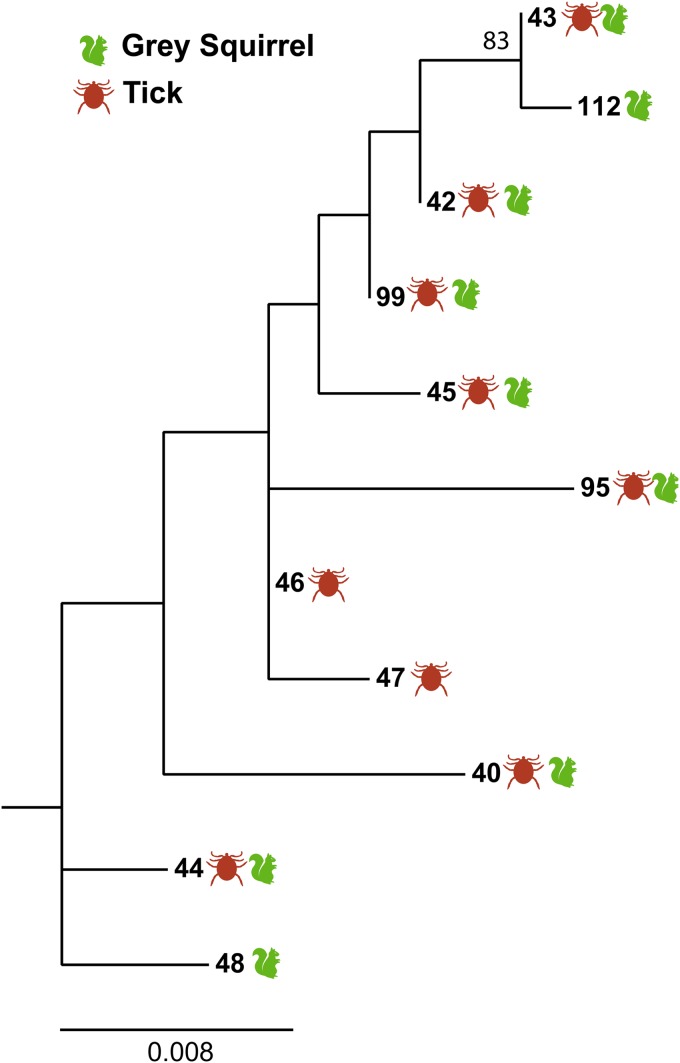FIG 2.
Maximum-likelihood (ML) phylogeny showing the diversity of clpA alleles from B. garinii originating from infected gray squirrels (S. carolinensis) (n = 20) and questing I. ricinus ticks (n = 30) from Scotland. B. burgdorferi sensu stricto (clpA allele 15) was used as an outgroup to root the tree (not shown). The allele numbers follow the classification from the B. burgdorferi MLST website (http://borrelia.mlst.net/). Nine alleles were detected in squirrels, alleles 40 (n = 3), 42 (n = 3), 43 (n = 4), 44 (n = 1), 45 (n = 2), 48 (n = 1), 95 (n = 2), 99 (n = 3), and 112 (n = 1). The ML tree was estimated based on the Hasegawa-Kishino-Yano model (78) in MEGA 6 (54), with 500 boot straps to evaluate branch support. Only bootstrap values greater than 70 are displayed on the tree. The scale bar represents nucleotide substitutions per site (genetic divergence).

